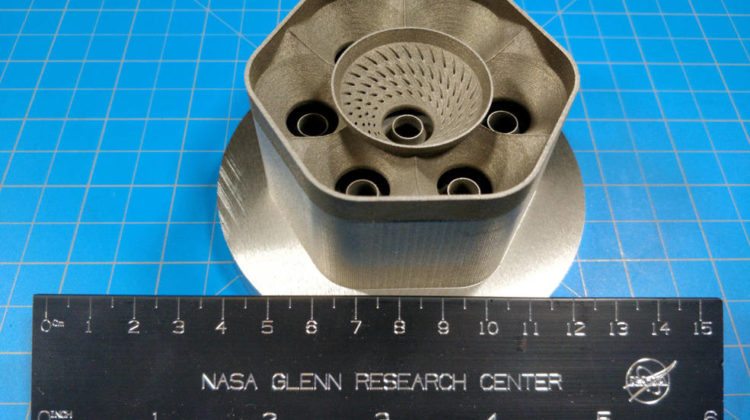
A team of NASA scientists has developed a new metal alloy that they say will dramatically improve the strength and durability of the components and parts used in aviation and space exploration, resulting in better and longer-lasting performance.
NASA Alloy GRX-810, an oxide-dispersion-strengthened alloy, delivers enhanced mechanical properties at extreme temperatures. Compared to current state-of-the-art alloys, at 1,000°C, GRX-810 exhibits twice the strength to resist fracturing; three and a half times the flexibility to stretch or bend prior to fracturing; and more than 1,000 times the durability under stress.
According to the researchers, the alloy has major implications for the future of sustainable flight. For example, when used in a jet engine, its ability to withstand higher temperature and increased durability translate into reduced fuel burns and lower operating and maintenance costs.The alloy also affords engine-part designers new flexibilities, such as lighter materials paired with vast performance improvements, so they can now contemplate trade-offs they couldn’t consider before, without sacrificing performance.
‘This breakthrough is revolutionary for materials development. New types of stronger and more lightweight materials play a key role as NASA aims to change the future of flight,’ said Dale Hopkins, deputy project manager of NASA’s Transformational Tools and Technologies project. ‘Previously, an increase in tensile strength usually lowered a material’s ability to stretch and bend before breaking, which is why our new alloy is remarkable.’
The team applied thermodynamic modelling and leveraged 3D printing to develop the new high-temperature alloy. The former enabled them to discover the optimal alloy composition after only 30 simulations, while the latter allowed them to uniformly disperse nanoscale oxides throughout the alloy.‘The nanoscale oxide particles convey the incredible performance benefits of this alloy,’ Hopkins said.
‘Applying these two processes has drastically accelerated the rate of our materials development. We can now produce new materials faster and with better performance than before,’ said Tim Smith, a material research scientist at NASA’s Glenn Research Center in Cleveland and one of the inventors of the new alloy.
‘What used to take years through a trial-and-error process now takes a matter of weeks or months to make discoveries,’ said Hopkins.
The modelling tool avoids dead ends by showing researchers not just what metal types to incorporate but how much of each element to infuse into the composition. ‘The performance of this alloy clearly demonstrates the modelling tool’s maturity and ability to produce significant results,’ said Steve Arnold, materials and structures technical discipline lead at NASA Glenn.


